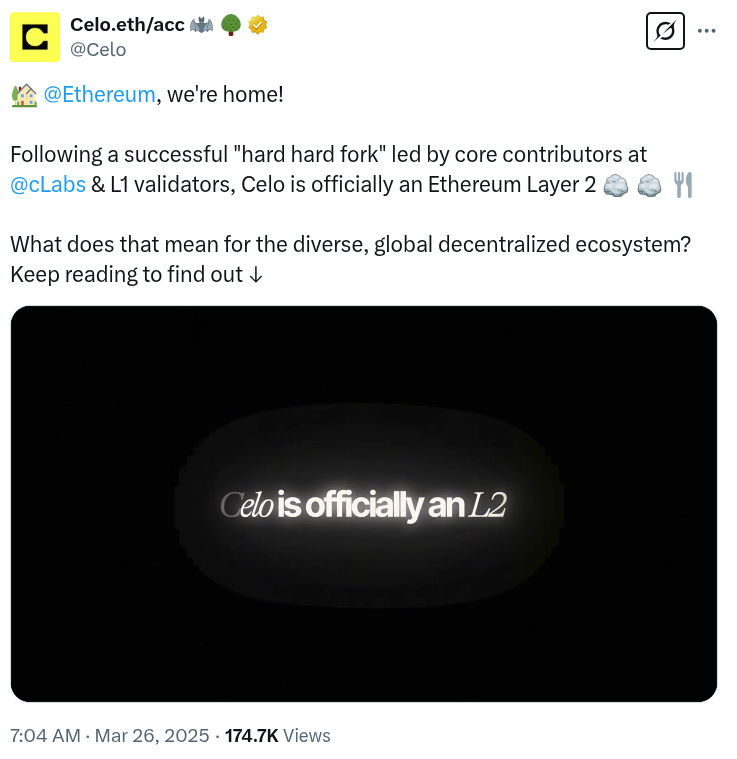Launched in 2020, Celo has now transitioned from a layer-1 blockchain to an Ethereum layer-2 protocol.
On March 26, the network announced the successful change in a post, declaring, “Celo is officially an Ethereum layer 2” protocol. Within the discussion thread, it was noted that the new protocol offers one-second block times, transaction costs that are mere cents, and utilizes Tether’s USDt (USDT) and USDC (USDC) as gas currencies.
The proposal for this shift was initially presented in the summer of 2023, and it has now been finalized following the halt of block production on the previous layer-1 platform, leading to operations on the new network. The upgraded platform is built on the OP technology stack, employing an optimistic rollup structure.

Image credit: Celo
Related: Vitalik Buterin praises Celo for surpassing Tron in stablecoin addresses
Architecture Based on Optimism
Blockchain rollups serve as layer-2 scaling solutions that aggregate numerous transactions off the main blockchain, easing congestion and reducing transaction fees. They are termed “optimistic rollups” due to their default assumption that off-chain transactions are valid, employing fraud proofs only when discrepancies arise during a challenge phase.
Marek Olszewski, CEO of Celo’s developer team, expressed that “transitioning to Ethereum L2 boosts Celo’s security and scalability.” He added:
“Transactions on Celo are now secured by Ethereum, gaining its proven economic security and decentralization. The Celo layer 2 also provides one-second block times and nearly instantaneous confirmations.”
Related: A beginner’s guide to understanding blockchain layer architecture
Utilizing Ethereum’s Network Benefits
Irfan Shaik, founder of the rollup protocol Interstate, viewed this transition favorably, emphasizing that Ethereum possesses “the strongest network effects among all chains.” He noted:
“Layer 1 platforms experiencing liquidity fragmentation can now access the largest liquidity pool, which consists of ETH layer 1s.”
Olszewski also expressed his enthusiasm for the move to the OP technology stack, explaining that it facilitates “enhanced composability with Ethereum-native applications and protocols.” The updated system has also been greatly simplified, resulting in a reduction of 365,000 lines of code, thus minimizing the potential for attacks and leading to a more efficient, tidier, and faster codebase.
He emphasized that this upgrade successfully maintained Celo’s nearly five-year chain history and was executed in a trustless manner. Furthermore, the token has been migrated to the Ethereum blockchain, which, according to Olszewski, is expected to significantly enhance its liquidity. He clarified:
“This means Celo is now a fully-aligned Ethereum layer 2 — in its structure, ecosystem, and purpose.”
Magazine: What are native rollups? Comprehensive guide to Ethereum’s recent innovation
